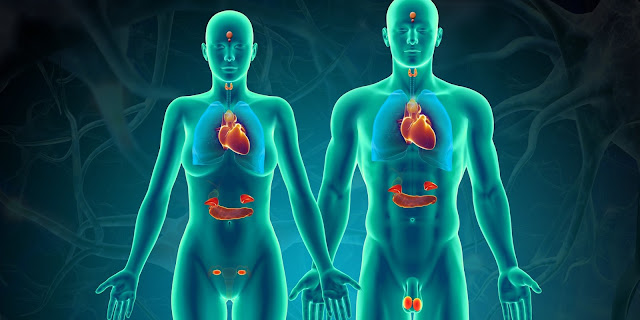Measuring Organics with High Precision - The Role of Total Carbon Analyzers
 |
| Total Carbon Analyzers |
Total
organic carbon (TOC) analysis is a form of test that is widely used to quantify
the amount of organic compounds present in a water or soil sample. It measures
all organic compounds whether they are soluble or insoluble and provides a
single value for total organic carbon content. This parameter is important as
organics affect water quality and can also influence treatment processes. TOC
analyzers are instruments specifically designed to perform TOC analysis.
How does a Total Carbon Analyzer work?
A Total
Carbon Analyzer works on the principle of oxidative combustion. In this
process, a sample is acidified to convert all carbon species to carbon dioxide
(CO2). It is then combusted at high temperatures usually around 680 degrees
Celsius in the presence of a catalyst. This oxidizes all organic and inorganic
carbon compounds to CO2. Next, non-dispersive infrared (NDIR) detection is used
to measure the amount of CO2 produced which is directly proportional to the
total carbon originally present in the sample. Modern instruments automate the
entire process from sample injection to CO2 measurement.
Key Components of a Total Carbon
Analyzer
The main components of a total carbon analyzer include an auto-sampler,
acidification module, combustion furnace, catalytic oxidizer, NDIR detector and
associated pumps, switches and electronic controls.
The auto-sampler injects preset volumes of sample into the system using a
syringe. This ensures consistency and allows for automated analysis of multiple
samples.
Acidification is done to convert forms of carbon like carbonates and
bicarbonates to CO2. Sulfuric acid is commonly used for this reaction.
The combustion furnace heats the acidified sample to at least 680 degrees
Celsius to ensure complete oxidation of carbon to CO2.
A catalyst like platinum or palladium is used inside the high temperature
furnace to aid the oxidation reaction.
The NDIR detector has an infrared source and sensor to specifically detect and
quantify CO2 based on absorbance of infrared light.
Various pumps and switches automate fluid handling and control gas flows
throughout the instrument during different stages of analysis.
Data is processed electronically by the instrument's control software yielding
a digital readout of total carbon concentration.
Applications of Total Carbon Analysis
Some key applications of total organic carbon analysis using dedicated
instruments include:
Drinking Water Quality Monitoring – TOC is used to check source and treated
waters for removal of organics during treatment processes. It indicates
biodegradable organics and potential disinfection by-product precursors.
Wastewater Treatment Plant Monitoring – TOC analysis of influents and effluents
helps optimize treatment processes and ensure compliance of discharge
standards.
Surface Water Quality Testing – TOC serves as a non-specific indicator of
pollution loads from agricultural, industrial and urban runoff in rivers, lakes
etc.
Pharmaceutical and Electronics Industry QC – Ultrapure water free from organics
is required. TOC analysis helps validate process water quality.
Groundwater Contamination Assessment – TOC aids in identification of potential
contaminant plumes from industrial/municipal activities seeping into aquifers.
Advantages of Total Carbon Analysis
There are several advantages of using specialized TOC instruments for organic
carbon quantification:
- Measures all organic carbon forms - both soluble and insoluble. Gives a
complete picture of water quality.
- Automated analysis with capability for high sample throughput. Rapid
generation of data for timely process/compliance decisions.
- Consistent and precise response with NDIR detection. Delivers highly
repeatable results even at very low ppb carbon levels.
- Minimal or no sample pre-treatment required. Shortens analysis time compared
to other organic carbon methods.
- Operation is simple and foolproof for most laboratory technicians after basic
training. Reliable performance with minimal maintenance.
- Provides a non-specific indicator parameter useful across many industrial and
municipal water/waste treatment applications.
Choosing the Appropriate Total Carbon
Analyzer
In order to select a suitable TOC analyzer, factors like analyzer technology,
sample throughputs, detection limits, certifications, service support, and cost
should be evaluated based on individual lab requirements. Reputable
manufacturers offer a range of models to match measuring needs from
parts-per-million to parts-per-billion carbon concentration levels. Proper installation,
operation and maintenance are also important to maximize instrument performance
and reliability over its lifespan. Total carbon analysis delivers high value
for process and environmental monitoring applications worldwide through
accurate quantification of organics using online, portable or benchtop analyzer
systems.
Get
more insights on Total
Carbon Analyzer
About Author
Priya Pandey, is
a dynamic and passionate editor with over three years of expertise in content
editing and proofreading. Holding a bachelor's degree in biotechnology, Priya
has a knack for making the content engaging. Her diverse portfolio includes
editing documents across different
industries, including food and beverages, information and technology,
healthcare, chemical and materials, etc. Priya's meticulous attention to
detail and commitment to excellence make her an invaluable asset in the world
of content creation and refinement.
(LinkedIn- https://www.linkedin.com/in/priya-pandey-8417a8173/)



Comments
Post a Comment